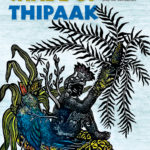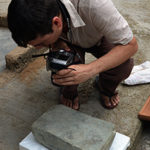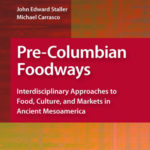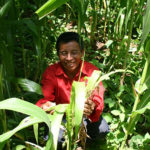Michael Carrasco
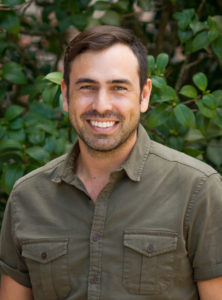
Interim Director, Museum of Fine Arts
Associate Dean, College of Fine Arts
Associate Professor
Indigenous Visual Cultures of the Americas
PhD University of Texas at Austin
Curriculum Vitae
mcarrasco@fsu.edu
3021 William Johnston Building
Michael D. Carrasco is the Associate Dean for Research in the College of Fine Arts and is an Associate Professor in the Department of Art History. His research centers on the Indigenous people of the Americas, particularly the cultures of Mesoamerica, as well as critical heritage studies, digital imaging, and the relationship between indigenous artistic traditions and the global art system. He was the founding director of the Museum and Cultural Heritage Studies MA degree program and creator of the Visual Cultures of the Americas area of study. He has a strong record of bringing together multidisciplinary teams to work on significant problems best approached from different disciplinary perspectives. This approach has informed his research on the origins of Mesoamerican writing systems, which has entailed collaboration with colleagues in scientific computing, digital heritage foundations, and museums to document and disseminate examples of early writing and Middle Formative period iconography. Similarly, his scholarship on the bioheritage and cultural meaning of cycads has established connections between archaeologists, geneticists, botanists, and geographers to develop a broad picture of these plants in Mesoamerican, Caribbean, Asian cultures.
Carrasco has received many internal and external grants, including ones from the National Endowment for the Humanities, the Consejo Nacional de Ciencia y Tecnología (CONACYT), and the Japan Council of Local Authorities for International Relations (CLAIR). The fruits of his scholarship have appeared in journal publications, book chapters, and in the edited volumes, Under the Shade of Thipaak: The Ethnoecology of Cycads in Mesoamerica and the Caribbean (University Press of Florida, 2022), Interregional Interaction in Ancient Mesoamerica (University Press of Colorado, 2019), Parallel Worlds: Genre, Discourse, and Poetics in Contemporary, Colonial, and Classic Maya Literature (University Press of Colorado, 2012), and Pre-Columbian Foodways: Interdisciplinary Approaches to Food, Culture, and Markets in Ancient Mesoamerica (Springer, 2010). He was co-curator with Paul Niell and Lesley A. Wolff of the exhibition Decolonizing Refinement: Contemporary Pursuits in the Art of Edouard Duval-Carrié (Museum of Fine Arts, Florida State University, February 16-April 1, 2018).
Currently, he is working on several projects, including the books Of How they Pleased the Hearts of their Gods: Myth, Ritual, and the Sacred Image in Maya Art and Culture (under contract with the University Press of Colorado) and From the Stone Painters Brush: An Anthology, Commentary, and Analysis of Classic Maya Literature, A. D. 250-900, and the edited volume Mesoamerican Ceramics: Form, Function, and Meaning (under contract with Springer). Carrasco co-directs the Mesoamerican Corpus of Formative Period Art and Writing.
He has supervised many doctoral and MA projects that range in subject matter from the ancient Americas to modern and contemporary global art and heritage. Prospective doctoral students should contact him prior to applying to discuss their projects.
Research Areas
- The expressive cultures of the Indigenous peoples of the Americas
- Mesoamerican iconography, epigraphy, and poetics
- Indigenous foodways, ethnobotany, and ecology
- Critical Heritage Studies and Digital Humanities and Imaging
- The relationships between “traditional” expressive cultures and aesthetics and the contemporary Global Art System
Advisees
Sheila Scoville (co-chair) “Visualizing relations in their time-place: The ecocultural landscapes of maguey.”
Completed Dissertations
Gabriela Germana, “The Tablas de Sarhua: Indigenous Aesthetics in the Context of Contemporary Peruvian Art.”
Lesley Wolff, “, “¡Guerra al metate! The Visuality of Foodways in Postrevolutionary Mexico City (1920 – 1960).”
Tugba Batuhan, “Museums in the Construction of National Identity in Twentieth Century Mexico and Turkey.”
Bryan Schaeffer, “Sojourn to the Sun God: Places of Travel in Mixtec Codices.”
Kristi Peterson, “Consumption and Construction: Devotional Images and the Place of Empire in Postclassic Mexico, 1325 – 1521.”
Heather Lundy, “Architecture and Placemaking at a Northern Maya City: Ek’ Balam and the Question of Style.”
Diantha Steinhilper, “Identity and Empire in the Colonial Maps of Mexico,1524-1600.” (Co-chair)
List of FSU Art History dissertations
Graduate Seminars
Cultural Heritage Theory and Practice
Cultural heritage is an integral part of ongoing processes of social change. When we make choices about the presentation of cultural objects and practices we are constructing a particular past, commenting upon the present, and shaping the future. The fragments of the past we work with are used in the creation and reformation of contemporary communities. Accordingly, Cultural Heritage Studies embraces a wide range of related subjects. These comprise among other topics the relationship between people and the representation, interpretation, and valuation of the past and traditional practices; the contemporary communities and stakeholders who make use of them; and the practices through which both tangible and intangible heritage are intentionally preserved, exhibited, and theorized.This seminar is a graduate-level introduction to these issues, including such topics as definitions of tangible and intangible cultural heritage, the role of public opinion and tourism in the protection and interpretation of cultural heritage, the impact of development and conflict, questions of authenticity and identity, international law, and ethics. We will examine theories and methods in cultural heritage work from both local and international perspectives. Although largely theoretical the seminar unfolds around specific cultural heritage problems or “case studies.” The tension between the objective display of material and subjective experience will form the core of our discussions, through which we will explore ways of creating meaning and consider the implications of curatorial practice.
The Ecology of Images
From Gregory Bateson’s ecology of mind, to Susan Sontag’s ecology of images, to Sunil Manghani’s and David Morgan’s use of the same phrase in visual culture studies, ecology has increasingly served as an analytic lens for understanding not only contemporary environmental problems and the fate of past civilizations, but also as a way of probing complex systems more generally. Sontag coined the phrase “ecology of images” to describe the relationship between reality and photographs. However, instead of seeing images as depleting reality, as Sontag believed in the case of the photograph, this course examines images as a vehicle through which reality is given specific cultural meanings through its representation. Likewise, we will query how an ecology of images may be a better conceptual tool for capturing and discussing the multimodal nature of experience, the role of art in ritual, the interaction between sensorial fields in aesthetic experience, and other similar issues. This seminar draws on a range of theoretical readings and case studies from several different cultural contexts and periods primarily drawn from Japan, Latin America, and Modern and Contemporary art.
Writing, Literature, and Poetics in Mesoamerica
This seminar investigates the literary and calligraphic arts as well as the social use of writing in the Precolumbian and Early Colonial periods. The first third of the course examines the various definitions and theories of writing and the origin and historic development of scripts in Mesoamerica. The second third surveys the diverse calligraphic arts of Mesoamerica, including Central Mexican and Maya codices, monumental inscriptions, ceramic texts, and colonial maps. It also focuses on topical issues, such as the relationship between text and image, the architectural context of texts, and their production and reception. The final third reviews the ways writing and the concept of writing were utilized in the Colonial period by indigenous and European communities.
Digital Documentation and the Preservation of Cultural Heritage
This course introduces techniques for the digital documentation of collections using a suite of photographic and scanning technologies, such as photogrammetry, Reflection Transformation Imaging (RTI), and 3D scanning. The merits of such technologies, best practices, and the rationale for digital preservation and documentation are reviewed followed by an introduction to the basic technologies. Students in groups create RTI images and 3D models from which they generate digital drawings when appropriate. Concurrent with this documentation process, each group will research their materials with the goal of disseminating their findings in a presentation, research paper, and catalogue, as well as drafting a white paper about documentation process. Because these documentation technologies may be done through the use of relatively inexpensive cameras and equipment these techniques will likely play an ever-increasing role in art historical, archaeological, and other related areas of research. Digital documentation techniques are particularly useful because they reveal details often difficult to examine in normal conditions. They offer means of digitally preserving objects through inexpensive and non-destructive means. 3D digital objects may also be printed and thus pose novel ways of presenting and disseminating information while raising new issues in copyright law, cultural heritage ethics, authenticity, and view/object interaction.
Lecture Courses
- Great Traditions in Mesoamerican Art and Culture
- The Art and Culture of the Maya
- The Art, Architecture, and Cultures of Central Mexico from the Postclassic (AD 1200) to the 16th Century
Grants and Awards
The Daniel F. Austin Award for the book Under the Shade of Thipaak.
The Origins of Writing in Early Mesoamerica, National Endowment for the Humanities Collaborative Research Grant, RZ271159-20, 2021–2023.
Furusato Vision Project. Oita’s Bamboo Arts and Heritage. The Council of Local Authorities for International Relations (CLAIR), Tokyo, Japan, October 2017.
Co–PI, Cícadas y la Domesticación de Maíz en el Paisaje Mesoamericano: Elucidando una Relación Milenaria mediante la Genómica, la Arqueología y la Geografía Cultural, CONACYT Fronteras de la Ciencia Grant, FC-2015-02-901, 2016–2018.
PI. NEH Fellowship: From the Stone Painter’s Brush: An Anthology, Commentary, and Analysis of Classic Maya Literature, AD 250-900. National Endowment for the Humanities, FA-233454-16, (May 2016–Apr 2017).
